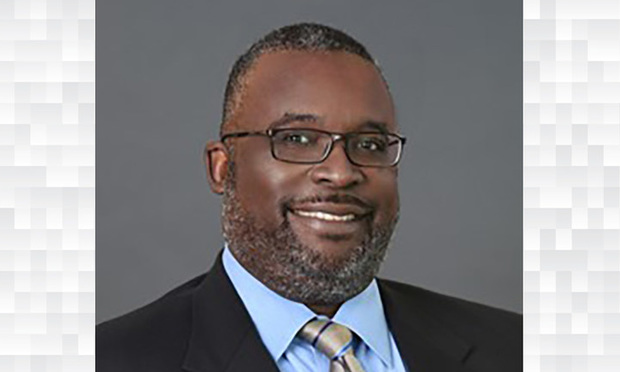A Path to Turning the Tide on Florida's Red Tide
The outbreaks of red tide and blue-green algae this summer and into fall had a disruptive effect on the chief economic engine of Florida's economy—tourism. That means the people of each Florida county, coastal or not, will suffer either directly or indirectly with a significant reduction in tourism revenues caused by these ecological disasters.
December 14, 2018 at 02:30 PM
4 minute read
 Keith Williams, with Saul Ewing Arnstein & Lehr in Fort Lauderdale.
Keith Williams, with Saul Ewing Arnstein & Lehr in Fort Lauderdale.
The outbreaks of red tide and blue-green algae this summer and into fall had a disruptive effect on the chief economic engine of Florida's economy—tourism. That means the people of each Florida county, coastal or not, will suffer either directly or indirectly with a significant reduction in tourism revenues caused by these ecological disasters. Additionally, there is a public health crisis caused by the fumes, odors and excess organic matter floating in our waters, not to mention the negative visual aspect of dead fish, dead manatees and other sea life that are harmed by these prolonged bacterial and algal outbreaks on our shores. While these outbreaks are a naturally occurring phenomena, they appear to worsen each time they appear. That aspect of these bacterial and algal blooms does not appear to be “natural.” Instead, this phenomenon can be directly tied to Florida's rapid and continued population growth over the last 30 years. As Florida continues to grow, there is something that we can all do collectively to “turn the tide,” and reduce the risk of worsening red tide/blue green algae outbreaks.
- Collectively demand that the Florida Department of Environmental Protection and Florida's five Water Management Districts immediately complete the process for adopting rules that impose numeric nutrient criteria and total maximum daily loads (TMDL's) for total nitrogen and total phosphorus for all Florida water bodies, especially those in the Kissimmee River Basin, St. Lucie River Basin, Charlotte Harbor, Loxahatchee River Basin and Caloosahatchee River Basin and then enforce these rules equally and swiftly along with local public health departments.
- Classify every body of navigable water as impaired and require each new and existing residential development, farm, commercial or industrial user to treat its effluent to a Class III level before discharging into navigable water, at minimum.
- Require all users, whether residential, agricultural, commercial or industrial, to reduce their ultimate discharges of total phosphorous and total nitrogen into the navigable waters of Florida by doing the following: significantly reducing the application of concentrated nitrogen or phosphorous fertilizers to row crops, sod farms, landscape areas (i.e., roadway medians, condominium and HOA common areas, business parks), recreational areas (i.e. golf courses, public parks, etc.) and residential lawns; connecting all residential, industrial, or commercial septic tank users to a local sewer wastewater treatment system; create more large scale treatment areas funded by private/public partnerships to further treat waste water prior to discharge into any navigable waters.
This effort will not be without costs, but in the interest of the state economy, a system of dedicated tax breaks and loan forgiveness programs aimed at enticing spending on reducing nitrogen and phosphorous waste to save the state's number-one economic engine should be created by the Legislature and governor to allow everyone equal access to available waste cleaning technologies. This goes beyond the current efforts to increase water storage around Lake Okeechobee; although that effort is very commendable, it will not be enough.
While it may seem convenient for some Floridians to point fingers at other Floridians as being the chief cause of excess nutrient discharges that exacerbate red tide and blue-green algae blooms, the reality is that all of our collective activity contributes in some way to the worsening of the problem. Whether you add extra fertilizer to your lawn to placate your HOA or a condo board adds fertilizer to satisfy local government requirements for greenery or people who want rural lifestyles won't connect to a sewer or agricultural users don't retain more of their fertilizer or animal waste on site for treatment, we all perform activities that add to, and do not reduce, the level of nutrients in Florida's water. So long as that trend continues, each outbreak will likely be worse than the last. That certainly isn't the memory of Florida we wish for our visitors to take home with them.
Keith Williams is an associate at Saul Ewing Arnstein & Lehr. He has extensive experience working in complex trial litigation of real property, eminent domain, land use, environmental, construction and tort matters in state circuit court and federal district court.
This content has been archived. It is available through our partners, LexisNexis® and Bloomberg Law.
To view this content, please continue to their sites.
Not a Lexis Subscriber?
Subscribe Now
Not a Bloomberg Law Subscriber?
Subscribe Now
NOT FOR REPRINT
© 2025 ALM Global, LLC, All Rights Reserved. Request academic re-use from www.copyright.com. All other uses, submit a request to [email protected]. For more information visit Asset & Logo Licensing.
You Might Like
View All
Initial Steps to Set Up a Fla. Appeal: Your Future Self (or Appellate Attorney) Will Thank You
6 minute read
Divorce Timing Is Everything: Waiting for the New Year May Have Its Advantages
4 minute read
Motions for Summary Judgment and Discovery: The 2021 Rule Changes Continue to Emerge
5 minute read
Trending Stories
Who Got The Work
Michael G. Bongiorno, Andrew Scott Dulberg and Elizabeth E. Driscoll from Wilmer Cutler Pickering Hale and Dorr have stepped in to represent Symbotic Inc., an A.I.-enabled technology platform that focuses on increasing supply chain efficiency, and other defendants in a pending shareholder derivative lawsuit. The case, filed Oct. 2 in Massachusetts District Court by the Brown Law Firm on behalf of Stephen Austen, accuses certain officers and directors of misleading investors in regard to Symbotic's potential for margin growth by failing to disclose that the company was not equipped to timely deploy its systems or manage expenses through project delays. The case, assigned to U.S. District Judge Nathaniel M. Gorton, is 1:24-cv-12522, Austen v. Cohen et al.
Who Got The Work
Edmund Polubinski and Marie Killmond of Davis Polk & Wardwell have entered appearances for data platform software development company MongoDB and other defendants in a pending shareholder derivative lawsuit. The action, filed Oct. 7 in New York Southern District Court by the Brown Law Firm, accuses the company's directors and/or officers of falsely expressing confidence in the company’s restructuring of its sales incentive plan and downplaying the severity of decreases in its upfront commitments. The case is 1:24-cv-07594, Roy v. Ittycheria et al.
Who Got The Work
Amy O. Bruchs and Kurt F. Ellison of Michael Best & Friedrich have entered appearances for Epic Systems Corp. in a pending employment discrimination lawsuit. The suit was filed Sept. 7 in Wisconsin Western District Court by Levine Eisberner LLC and Siri & Glimstad on behalf of a project manager who claims that he was wrongfully terminated after applying for a religious exemption to the defendant's COVID-19 vaccine mandate. The case, assigned to U.S. Magistrate Judge Anita Marie Boor, is 3:24-cv-00630, Secker, Nathan v. Epic Systems Corporation.
Who Got The Work
David X. Sullivan, Thomas J. Finn and Gregory A. Hall from McCarter & English have entered appearances for Sunrun Installation Services in a pending civil rights lawsuit. The complaint was filed Sept. 4 in Connecticut District Court by attorney Robert M. Berke on behalf of former employee George Edward Steins, who was arrested and charged with employing an unregistered home improvement salesperson. The complaint alleges that had Sunrun informed the Connecticut Department of Consumer Protection that the plaintiff's employment had ended in 2017 and that he no longer held Sunrun's home improvement contractor license, he would not have been hit with charges, which were dismissed in May 2024. The case, assigned to U.S. District Judge Jeffrey A. Meyer, is 3:24-cv-01423, Steins v. Sunrun, Inc. et al.
Who Got The Work
Greenberg Traurig shareholder Joshua L. Raskin has entered an appearance for boohoo.com UK Ltd. in a pending patent infringement lawsuit. The suit, filed Sept. 3 in Texas Eastern District Court by Rozier Hardt McDonough on behalf of Alto Dynamics, asserts five patents related to an online shopping platform. The case, assigned to U.S. District Judge Rodney Gilstrap, is 2:24-cv-00719, Alto Dynamics, LLC v. boohoo.com UK Limited.
Featured Firms
Law Offices of Gary Martin Hays & Associates, P.C.
(470) 294-1674
Law Offices of Mark E. Salomone
(857) 444-6468
Smith & Hassler
(713) 739-1250






